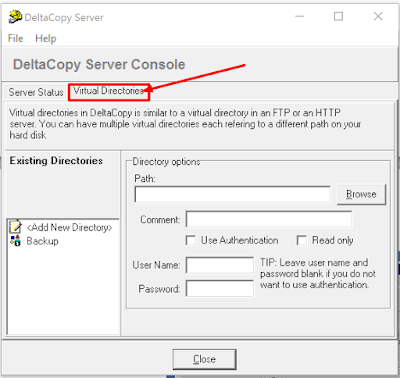Difference between RHEL 6.x and RHEL 7.x
Features
|
RHEL
6
|
RHEL
7
|
Default
File System
|
EXT4
|
XFS
|
Kernel
Version
|
2.6.x-x
Kernel
|
3.10.x-x
kernel
|
Kernel
Code Name
|
Santiago
|
Maipo
|
General
Availability Date of First Major Release
|
2010-11-09
(Kernel Version 2.6.32-71)
|
2014-06-09
(Kernel Version 3.10.0-123)
|
First
Process
|
init
(process ID 1)
|
systemd
(process ID 1)
|
Runlevel
|
Traditional
runlevels defined :
|
runlevels
are called as "targets" as shown below:
|
runlevel
0
|
runlevel0.target
-> poweroff.target
|
|
runlevel
1
|
runlevel1.target
-> rescue.target
|
|
runlevel
2
|
runlevel2.target
-> multi-user.target
|
|
runlevel
3
|
runlevel3.target
-> multi-user.target
|
|
runlevel
4
|
runlevel4.target
-> multi-user.target
|
|
runlevel
5
|
runlevel5.target
-> graphical.target
|
|
runlevel
6
|
runlevel6.target
-> reboot.target
|
|
and
the default runlevel would be defined in /etc/inittab file.
|
/etc/systemd/system/default.target
(this by default is linked to the multi-user target)
|
|
/etc/inittab
|
||
Host
Name Change
|
In
Red Hat Enterprise Linux 6, the hostname variable was defined in
the /etc/sysconfig/network configuration file.
|
In
Red Hat Enterprise Linux 7, as part of the move to the new init
system (systemd), the hostname variable is defined in
/etc/hostname.
|
Change
In UID Allocation
|
Default
UID assigned to users would start from 500.
|
By
default any new users created would get UIDs assigned starting
from 1000.
|
This
could be changed in /etc/login.defs if required.
|
||
This
could be changed in /etc/login.defs if required.
|
||
Max
Supported File Size
|
Maximum
(individual) file size = 16TB
|
Maximum
(individual) file size = 500TB
|
Maximum
filesystem size = 16TB
|
Maximum
filesystem size = 500TB
|
|
(This
maximum file size is based on a 64-bit machine. On a 32-bit
machine, the maximum files size is 8TB.)
|
(This
maximum file size is only on 64-bit machines. Red Hat Enterprise
Linux does not support XFS on 32-bit machines.)
|
|
File
System Check
|
"e2fsck"
|
"xfs_repair"
|
File
system check would gets executed at boot time.
|
XFS
does not run a file system check at boot time.
|
|
Differences
Between xfs_repair & e2fsck
|
||
"e2fsck"
|
"xfs_repair"
|
|
-
Inode, block, and size checks.
|
-
Inode and inode blockmap (addressing) checks.
|
|
-
Inode allocation map checks.
|
||
-
Directory structure checks.
|
-
Inode size checks.
|
|
-
Directory checks.
|
||
-
Directory connectivity checks.
|
-
Pathname checks.
|
|
-
Link count checks.
|
||
-
Reference count checks.
|
-
Freemap checks.
|
|
-
Super block checks.
|
||
-
Group summary info checks.
|
||
Difference
Between xfs_growfs & resize2fs
|
"resize2fs"
|
"xfs_growfs"
|
resize2fs
takes logical volume name as arguments.
|
xfs_growfs
takes mount point as arguments.
|
|
Change
In File System Structure
|
/bin,
/sbin, /lib, and /lib64 are usually under /
|
/bin,
/sbin, /lib, and /lib64 are now nested under /usr.
|
Boot
Loader
|
GRUB
0.97
|
GRUB
2
|
Supports
GPT, additional firmware types, including BIOS, EFI and
OpenFirmwar. Ability to boot on various file systems (xfs, ext4,
ntfs, hfs+, raid, etc)
|
||
KDUMP
|
Kdump
doesn’t work properly with large RAM based systems.
|
RHEL7
supports kdump on large memory based systems up to 3 TB
|
System
& Service Manager
|
Upstart
|
"Systemd"
|
systemd
is a system and service manager for Linux, and replaces SysV and
Upstart used in previous releases of Red Hat Enterprise Linux.
systemd is compatible with SysV and Linux Standard Base init
scripts.
|
||
Enable/Start
Service
|
Using
"service" command and "chkconfig" commands.
|
For
RHEL 7, the systemctl command replaces service and chkconfig.
|
-
Start Service : "service start nfs" OR "/etc/init.d/nfs
start"
|
-
Start Service : "systemctl start nfs-server.service".
|
|
-
Enable Service : To start with specific runlevel : "chkconfig
--level 3 5 nfs on"
|
-
Enable Service : To enable the service (example: nfs service ) to
start automatically on boot : "systemctl enable
nfs-server.service".
|
|
Although
one can still use the service and chkconfig commands to
start/stop and enable/disable services, respectively, they
|
||
are
not 100% compatible with the RHEL 7 systemctl command (according
to redhat).
|
||
Default
Firewall
|
Iptables
|
"Firewalld
(Dynamic Firewall)"
|
The
built-in configuration is located under the /usr/lib/firewalld
directory. The configuration that you can customize is under the
/etc/firewalld directory. It is not possible to use Firewalld and
Iptables at the same time. But it is still possible to disable
Firewalld and use Iptables as before.
|
||
Network
Bonding
|
"Bonding"
|
"Team
Driver"
|
-/etc/sysconfig/network-scripts/ifcfg-bond0
|
-/etc/sysconfig/network-scripts/ifcfg-team0
|
|
-
DEVICE=”bond0”
|
-
DEVICE=”team0”
|
|
-
DEVICETYPE=”Team”
|
||
Network
Time Synchronization
|
Using
ntpd
|
Using
Chrony suite (faster time sync compared with ntpd)
|
NFS
|
NFS4
|
NFS4.1
|
NFSv2
is no longer supported. Red Hat Enterprise Linux 7 supports
NFSv3, NFSv4.0, and NVSv4.1 clients.
|
||
Cluster
Resource Manager
|
Rgmanager
|
Pacemaker
|
Load
Balancer Technology
|
Piranha
|
Keepalived
and HAProxy
|
Desktop/GUI
Interface
|
GNOME2
|
GNOME3
and KDE 4.10
|
Default
Database
|
MySQL
|
MariaDB
is the default implementation of MySQL in Red Hat Enterprise
Linux 7
|
Managing
Temporary Files
|
Using
"tmpwatch"
|
RHEL
7 uses systemd-tmpfiles (more structured, and configurable,
method to manage tmp files and directories).
|
References: All the information is taken from internet and RHEL site
Please comments and suggestions are always welcome.
Keywords: difference between 6.x and 7.x, RHEL 6.x, RHEL 7.x, RHEL Features, RHEL.6.x Features, RHEL 7.x Features


Comments
Post a Comment